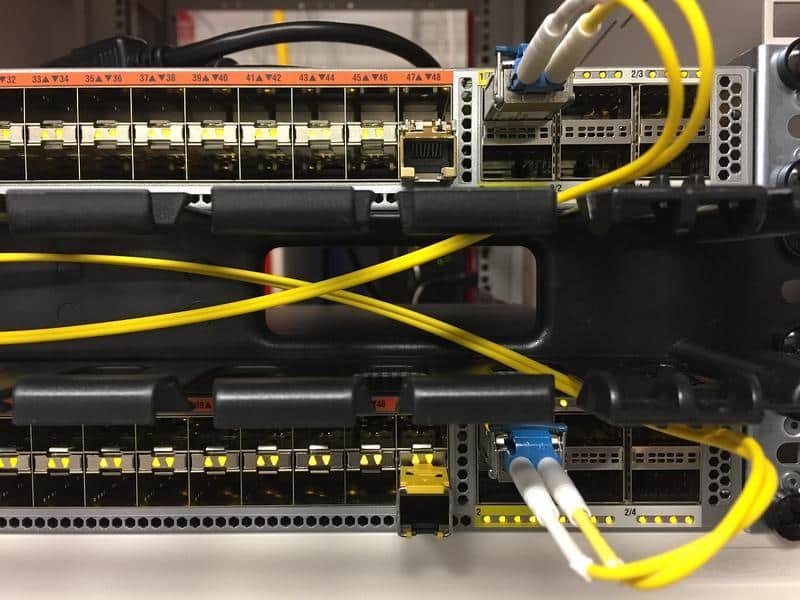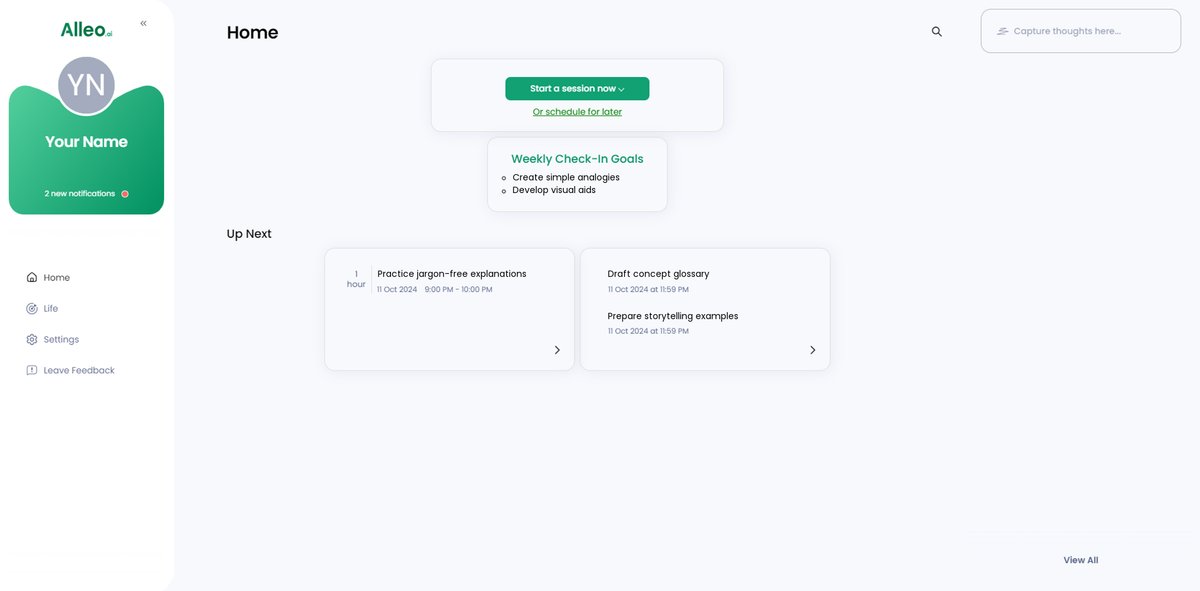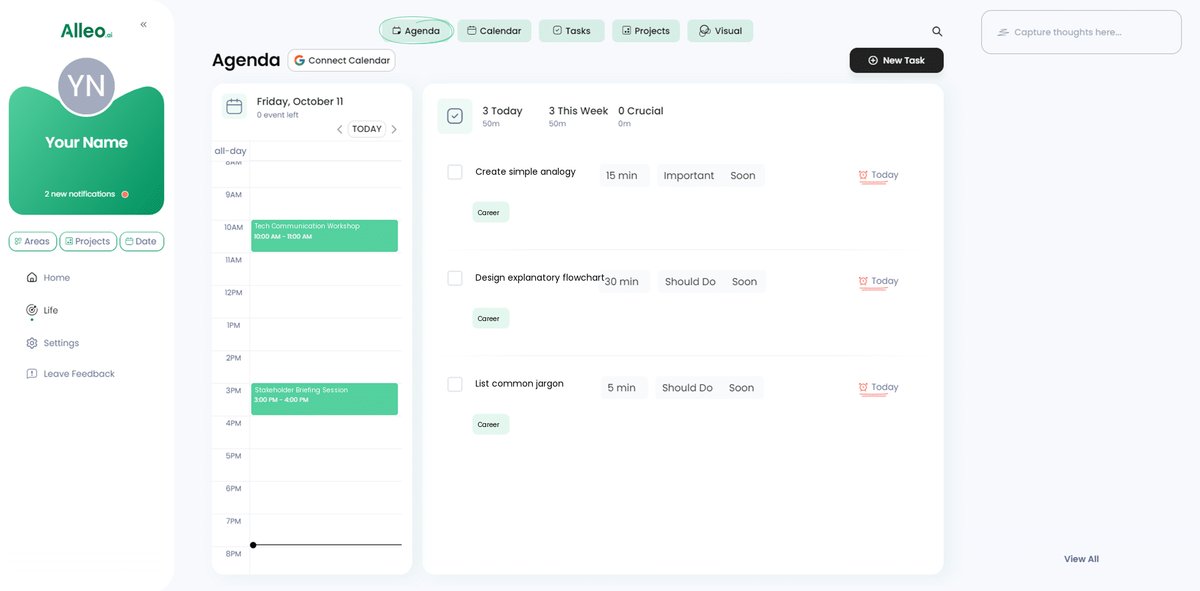7 Powerful Techniques to Explain Complex Tech Concepts to Non-Technical Stakeholders
Are you struggling with explaining tech to non-tech stakeholders? Simplifying technical jargon can be a challenge for many professionals.
As a life coach, I’ve helped many professionals navigate these challenges. In my experience, effective communication strategies for tech can make a significant difference in project success and bridging the tech knowledge gap.
In this article, you’ll discover actionable strategies for explaining tech to non-tech stakeholders. We’ll cover analogies for complex tech concepts, visual aids for explaining technology, plain language, and more to improve non-technical stakeholder engagement.
Let’s dive in and explore ways of demystifying IT for decision-makers.

The Challenge of Communicating Complex Tech Concepts
Explaining tech to non-tech stakeholders is a common issue. Many clients initially struggle with jargon and misunderstood concepts, highlighting the need for simplifying technical jargon.
This often leads to project delays and frustration, emphasizing the importance of effective communication strategies for tech.
In my experience, even the most skilled software engineers face this challenge. Stakeholders can become overwhelmed by technical complexities, underscoring the necessity of bridging the tech knowledge gap.
This can hinder collaboration and trust, making non-technical stakeholder engagement crucial.
Addressing this issue is critical. Clear communication is essential for project success, often requiring the use of visual aids for explaining technology.
Let’s explore actionable strategies to tackle this problem of explaining tech to non-tech stakeholders.

Key Strategies for Explaining Complex Tech Concepts
Overcoming this challenge of explaining tech to non-tech stakeholders requires a few key steps. Here are the main areas to focus on to make progress in bridging the tech knowledge gap:
- Use Simple Analogies and Real-World Examples: Relate technical concepts to everyday scenarios, leveraging analogies for complex tech concepts.
- Create Visual Aids Like Diagrams and Flowcharts: Develop visual tools to illustrate key points, enhancing stakeholder-friendly tech presentations.
- Avoid Jargon and Use Plain, Clear Language: Simplify your language for better understanding, effectively translating technical terms for laypeople.
- Practice Active Listening and Encourage Questions: Engage in non-technical stakeholder engagement by listening and prompting questions.
- Break Complex Concepts into Smaller Chunks: Divide information into manageable sections, simplifying technical jargon.
- Tailor Explanations to Audience’s Background: Customize your communication based on the audience’s knowledge, enhancing tech education for business leaders.
- Incorporate Storytelling Techniques: Use narratives to make technical concepts more relatable, demystifying IT for decision-makers.
Let’s dive into these effective communication strategies for tech!
1: Use simple analogies and real-world examples
Using simple analogies and real-world examples can make complex tech concepts relatable when explaining tech to non-tech stakeholders.
Actionable Steps:
- Identify common everyday scenarios that relate to the technical concept.
- Example: Explain streaming services using the analogy of a library where users check out movies, effectively simplifying technical jargon.
- Create a list of relatable analogies and practice using them in discussions.
- Example: Compare virtual reality to watching a 3D movie where you can interact with the environment, bridging the tech knowledge gap.
Explanation:
These steps matter because they bridge the gap between technical jargon and everyday understanding, which is crucial when explaining tech to non-tech stakeholders.
Analogies for complex tech concepts help non-technical stakeholders grasp complex ideas quickly. This approach also fosters better collaboration and trust, enhancing non-technical stakeholder engagement.
According to InterviewAce, using real-world examples is an effective communication strategy for tech when explaining technical concepts to non-technical audiences.
This technique sets the foundation for clearer communication as we move to visual aids for explaining technology.

2: Create visual aids like diagrams and flowcharts
Creating visual aids like diagrams and flowcharts helps simplify complex tech concepts for non-technical stakeholders, effectively explaining tech to non-tech stakeholders.
Actionable Steps:
- Develop simple diagrams that illustrate key concepts, bridging the tech knowledge gap.
- Example: Make a flowchart showing how data streams from a server to a client, demystifying IT for decision-makers.
- Use visual aids during presentations to enhance understanding and engage non-technical stakeholders.
- Example: Present a diagram of a virtual reality system’s components and their interactions, simplifying technical jargon.
- Provide handouts or digital copies of visual aids for stakeholders to reference.
- Example: Share a PDF with annotated diagrams explaining different aspects of streaming services, translating technical terms for laypeople.
Explanation:
These steps matter because visual aids can bridge the gap between technical jargon and clear understanding. Diagrams and flowcharts make complex data more digestible, which is crucial when explaining tech to non-tech stakeholders.
According to Morgan Library, simplicity in visual design is crucial for effective communication. This approach sets the foundation for clearer communication as we move to the next strategy in explaining tech to non-tech stakeholders.

3: Avoid jargon and use plain, clear language
Avoiding jargon and using plain, clear language is crucial when explaining tech to non-tech stakeholders. This approach helps in bridging the tech knowledge gap effectively.
Actionable Steps:
- Create a glossary of common technical terms with simple definitions.
- Define terms like “bandwidth” as the amount of data transmitted in a given time period, simplifying technical jargon for laypeople.
- Practice explaining concepts in layman’s terms.
- Describe “buffering” as the process of preloading data to ensure smooth playback, an effective communication strategy for tech concepts.
- Avoid using acronyms and technical slang unless necessary, and always explain them.
- Instead of saying “API,” explain it as “a set of rules that allows different software programs to communicate,” translating technical terms for non-technical stakeholders.
Key benefits of using plain language:
- Improves understanding for all stakeholders
- Reduces misinterpretations and errors
- Increases engagement and participation in discussions
Explanation:
These steps matter because they make complex information accessible to everyone. Simplified language ensures that stakeholders understand key concepts, which fosters collaboration and reduces misunderstandings when explaining tech to non-tech stakeholders.
According to Digital.gov, plain language creates a better user experience.
This approach lays the groundwork for more effective communication, paving the way for the next strategy in demystifying IT for decision-makers.

4: Practice active listening and encourage questions
Practicing active listening and encouraging questions is essential for clear communication when explaining tech to non-tech stakeholders.
Actionable Steps:
- Set aside time during meetings for stakeholders to ask questions.
- Allocate the last 10 minutes of a presentation for a Q&A session, fostering non-technical stakeholder engagement.
- Use reflective listening techniques to confirm understanding.
- Paraphrase stakeholders’ questions to ensure you understand their concerns, effectively bridging the tech knowledge gap.
- Encourage an open-door policy for ongoing questions and discussions.
- Invite stakeholders to email or message you with any follow-up questions, supporting tech education for business leaders.
Explanation:
These steps matter because they foster an environment of open communication and trust. By actively listening and encouraging questions, you ensure that stakeholders feel heard and understood when explaining tech to non-tech stakeholders.
This approach reduces misunderstandings and promotes collaboration. According to Omid.dev, effective communication strategies for tech are crucial for bridging the gap between technical and non-technical teams.
These practices pave the way for more detailed and clear explanations in future discussions, helping in demystifying IT for decision-makers.

5: Break complex concepts into smaller chunks
Breaking complex concepts into smaller chunks is essential when explaining tech to non-tech stakeholders, making it easier for them to understand.
Actionable Steps:
- Divide complex topics into manageable sections.
- Split the concept of virtual reality into hardware, software, and user experience, bridging the tech knowledge gap.
- Present information in a step-by-step manner.
- Explain the process of streaming video in stages: request, buffering, playback, effectively translating technical terms for laypeople.
Benefits of breaking down complex concepts:
- Enhances retention of information
- Allows for easier follow-up questions
- Provides natural pauses for clarification
Explanation:
These steps matter because they simplify complex ideas, making them more digestible. When you break down information, non-technical stakeholders can follow along more easily, improving stakeholder-friendly tech presentations.
This approach fosters better understanding and reduces overwhelm. According to Dice, simplifying technical jargon is crucial for effective communication strategies for tech.
This method ensures that your explanations are clear and concise, paving the way for deeper discussions and demystifying IT for decision-makers.

6: Tailor explanations to audience’s background
Tailoring your explanations to the audience’s background is crucial for effective communication when explaining tech to non-tech stakeholders.
Actionable Steps:
- Assess the technical knowledge of your audience before the meeting.
- Send a pre-meeting survey to gauge stakeholders’ familiarity with the topic, helping bridge the tech knowledge gap.
- Customize your presentation based on the audience’s expertise.
- Use more detailed technical explanations for a technically-savvy audience and simpler explanations for a general audience, focusing on effective communication strategies for tech.
- Provide context and background information where needed.
- Explain the basics of internet infrastructure before diving into streaming services, employing analogies for complex tech concepts.
Explanation:
These steps matter because understanding your audience’s knowledge level ensures your message is clear and relevant when explaining tech to non-tech stakeholders. Customizing your explanations builds rapport and trust with stakeholders, facilitating non-technical stakeholder engagement.
According to Dice, simplifying technical jargon is essential for avoiding misunderstandings and fostering collaboration, which is crucial when demystifying IT for decision-makers.
This approach prepares you to engage effectively with diverse audiences, paving the way for better project outcomes and creating stakeholder-friendly tech presentations.

7: Incorporate storytelling techniques
Incorporating storytelling techniques can make technical concepts more engaging and relatable when explaining tech to non-tech stakeholders.
Actionable Steps:
- Craft a narrative that highlights the impact of the concept.
- Use a story about how the concept solved a real-world problem, bridging the tech knowledge gap.
- Use characters and scenarios to illustrate points.
- Create a character who faces challenges that the technology helps to overcome, effectively translating technical terms for laypeople.
- End with a clear takeaway or moral.
- Summarize the story with the key benefits of the concept, enhancing non-technical stakeholder engagement.
Elements of effective storytelling in technical explanations:
- Relatable characters or situations
- Clear problem-solution structure
- Emotional connection to the concept
Explanation:
These steps matter because stories make complex ideas easier to understand and remember. Narratives can create emotional connections, making the information more engaging for non-tech stakeholders.
According to News Miami, data storytelling is an important skill for effectively conveying insights. This approach ensures your explanations are impactful and memorable, enhancing stakeholder engagement and simplifying technical jargon.
Using storytelling techniques can transform your communication and make technical concepts more accessible, effectively demystifying IT for decision-makers and improving stakeholder-friendly tech presentations.

Partner with Alleo to Master Clear Communication
We’ve explored the challenges of explaining tech to non-tech stakeholders and the steps to overcome them. But did you know you can work directly with Alleo to simplify this process of bridging the tech knowledge gap?
Set up an account and create a personalized plan with Alleo’s AI coach. The coach provides tailored support for simplifying technical jargon, follows up on progress, and keeps you accountable via text and push notifications. This helps you develop effective communication strategies for tech and master the art of non-technical stakeholder engagement.
Ready to get started for free? Let me show you how to enhance your skills in explaining tech to non-tech stakeholders!
Step 1: Log In or Create Your Account
To start mastering clear communication with our AI coach, log in to your existing account or create a new one to access personalized guidance and support.

Step 2: Choose “Building better habits and routines”
Click on “Building better habits and routines” to develop consistent practices for explaining technical concepts clearly, helping you overcome communication challenges with non-technical stakeholders and improve project outcomes.

Step 3: Select “Career” as Your Focus Area
Choose “Career” as your focus area to improve your technical communication skills, which will help you explain complex concepts more effectively to non-technical stakeholders and advance your professional growth.

Step 4: Starting a coaching session
Begin your journey with Alleo by scheduling an intake session, where you’ll discuss your communication challenges and set up a personalized plan to improve your skills in explaining complex tech concepts to non-technical stakeholders.

Step 5: Viewing and managing goals after the session
After your coaching session, access the goals you discussed by checking the home page of the Alleo app, where you can easily view and manage your progress towards clearer technical communication with stakeholders.

Step 6: Adding events to your calendar or app
Track your progress in explaining complex tech concepts by adding key milestones and practice sessions to your calendar or app, allowing you to monitor your improvement and stay accountable for implementing the communication strategies discussed in this article.

Wrapping Up: Clear Communication for Better Collaboration
As we conclude, remember that clear communication is key when explaining tech to non-tech stakeholders. Empathize with your stakeholders and simplify your explanations to bridge the tech knowledge gap.
You can make a significant difference in your project’s success by applying these strategies for effective communication in tech.
By using analogies for complex tech concepts, visual aids for explaining technology, and plain language, you can bridge the gap between technical and non-technical audiences.
Listening actively and breaking down complex concepts also fosters better understanding and collaboration, especially when translating technical terms for laypeople.
Tailoring your explanations and incorporating storytelling can make your message even more impactful, improving non-technical stakeholder engagement.
Don’t let communication barriers hold you back when explaining tech to non-tech stakeholders.
Partner with Alleo to master these skills in simplifying technical jargon.
Sign up for free and start transforming your stakeholder interactions today, enhancing your tech education for business leaders.